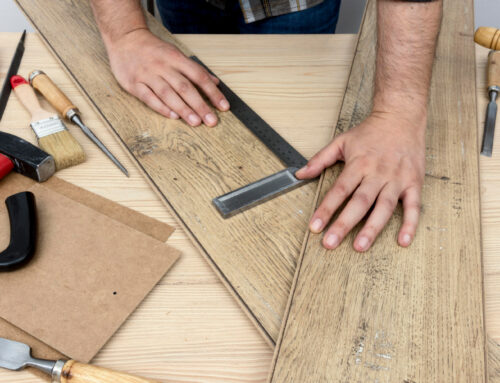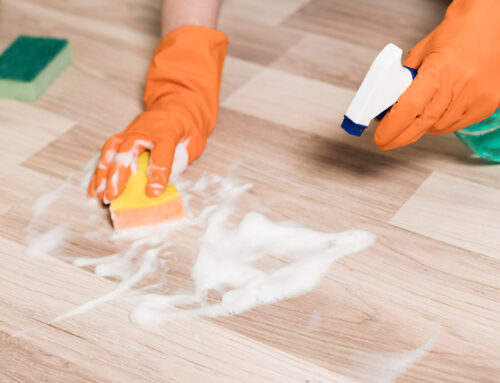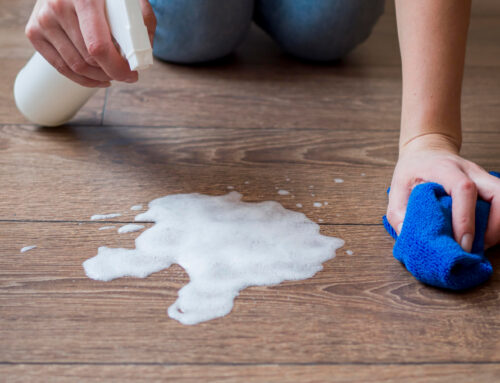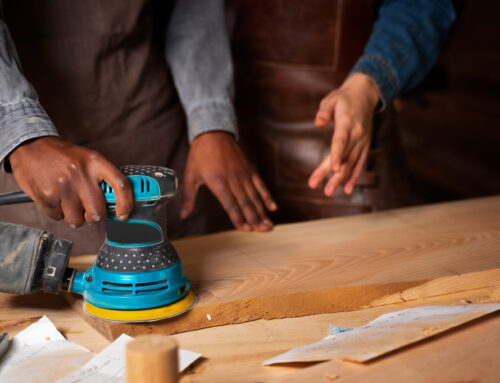Pre-finished hardwood flooring combines factory-applied durability with instant style. Hickory leads in hardness, maple offers modern elegance, white oak provides versatility, and red oak delivers budget-friendly tradition. Choose based on your home’s traffic patterns, design aesthetic, and maintenance preferences for floors that perform beautifully for decades.
Pre-finished hardwood flooring arrives ready to walk on with factory-applied finishes that outperform site-applied options. The real question isn’t whether to choose prefinished. It’s which species matches your lifestyle and design vision.
Busy families need dent-resistant hickory. Minimalist spaces shine with maple’s clean lines. Water-prone areas benefit from white oak’s moisture resistance. Budget-conscious renovators appreciate red oak’s affordability without sacrificing quality.
Think your floors are just background details? They’re actually the foundation of your home’s entire feel. The species you choose today determines whether you’re refinishing in five years or still loving your investment in fifty. Browse through Rustic Wood Floor Supply’s prefinished collections and see how the right wood species turns ordinary rooms into spaces you never want to leave.
What Makes Prefinished Hardwood Durable?
Prefinished durability starts in controlled factory environments where multiple coats cure under UV light or aluminum oxide treatments. These industrial processes create harder, more uniform finishes than on-site applications.
The Factory Finish Advantage
Factory-applied finishes bond at molecular levels. UV curing technology hardens coatings in seconds using ultraviolet light, creating cross-linked polymer chains that resist daily wear.
Aluminum oxide particles (the same abrasive used in sandpaper) get suspended in finish layers. This forms scratch-resistant surfaces tougher than traditional polyurethane.
Here’s what makes factory finishes superior:
- Most prefinished floors receive 7 to 10 finish coats compared to 2 to 3 coats applied on-site
- UV curing creates harder surfaces than air-dry finishes
- Controlled environments eliminate dust particles that weaken on-site finishes
- Edge bevels receive full coating coverage during manufacturing
Understanding the Janka Hardness Scale
The Janka hardness scale measures wood’s dent resistance. This standardized test presses a steel ball into wood until it embeds halfway, measuring the force required in pounds. Higher numbers mean harder wood.
Homes with children dropping toys, dogs running across rooms, or heavy furniture being moved need species rated above 1,200 Janka. Softer woods below 1,000 show dents from high heels and chair legs within months.
Hardness alone doesn’t guarantee longevity. Dense woods like hickory (1,820 Janka) naturally resist impact, but factory finishes multiply that inherent strength.
A properly finished maple floor (1,450 Janka) outperforms unfinished hickory in scratch resistance. The protective coating shields the wood fibers from damage.
Busy homes benefit most from the factory finish advantage. Families can’t avoid tracked in gravel, spilled juice, or furniture scrapes. Factory coatings create barriers that site-finished floors can’t match, especially at plank edges, where bevels receive full finish coverage during manufacturing.
4 Key Factors Affecting Hardwood Floor Style
Wood species creates the foundation, but specific characteristics determine whether your floor feels rustic, modern, or traditional.
1. Color Range and Natural Tones
Wood color varies dramatically between species. Maple ranges from creamy white to pale gold, creating bright, airy spaces. Hickory shifts from light blonde sapwood to rich brown heartwood, often within single planks. White oak offers consistent gray brown tones, while red oak brings warmer peachy-pink hues.
Stain absorption changes everything. Dense species like maple resist stain penetration, resulting in subtle color shifts. Porous woods like red oak absorb deeply, producing dramatic transformations from natural honey tones to espresso browns.
White oak’s open grain accepts stain evenly, making it ideal for custom colors.
Natural undertones influence room temperature:
- Cooler grays and whites (maple, white oak) pair with modern furnishings and concrete accents
- Warmer reds and golds (red oak, hickory heartwood) complement traditional wood furniture and brick fireplaces
2. Plank Width and Visual Impact
Narrow 2.25-inch strips create traditional patterns and make small rooms feel larger through repeated lines. Wide 5 to 7-inch planks showcase wood grain dramatically, reducing seam lines for contemporary minimalism.
Rooms over 300 square feet handle wider planks without visual overwhelm.
How plank width affects your space:
- Wider boards run fewer seams across spaces, creating seamless flows in open floor plans
- Narrow strips add busyness suitable for cozy dens and bedrooms
- Wide planks showcase natural wood grain and reduce visual interruptions
3. Finish Types: Matte, Satin, and Gloss
Sheen level transforms the same wood species into different styles:
- Matte finishes (10 to 25% light reflection) hide micro scratches and create soft, natural looks favored in Scandinavian and farmhouse designs
- Satin finishes (40 to 50% reflection) balance practicality with a subtle glow, suiting most interior styles without demanding constant maintenance
- Gloss finishes (70% plus reflection) amplify wood grain and color depth, creating formal elegance that shows every dust particle
Lower sheens forgive daily wear better than high gloss, which telegraphs every footprint and scratch.
4. Wood Grain, Knots, and Character
Grain patterns range from maple’s subtle whispers to hickory’s dramatic swirls. Tight, straight grains read as formal and refined. Wild, varied patterns bring organic energy.
Knots divide opinions sharply. Character-grade floors celebrate knots, mineral streaks, and color variations as authentic natural beauty. Clear grades minimize these features for a uniform appearance. Rustic spaces embrace imperfections, while modern aesthetics prefer consistency.
White oak’s cathedral grain creates arched patterns when quarter-sawn, adding architectural interest. Red oak’s prominent grain lines bring traditional texture. Hickory’s extreme grain variation ensures no two planks match exactly, perfect for spaces celebrating individuality.
Top Prefinished Hardwood Species for Durability & Style
Four species dominate North American pre-finished hardwood flooring markets, each excelling in specific applications.
1. Hickory
Hickory ranks highest in domestic hardness at 1,820 Janka, outperforming every common flooring wood. This exceptional density resists dents from dropped cookware, scratches from pet claws, and wear from constant foot traffic.
What Makes Hickory Unique?
Distinctive rustic grain makes hickory unmistakable. Extreme color variation within single boards creates natural drama. Pale cream sapwood contrasts sharply with chocolate heartwood.
The bold grain patterns and frequent knots deliver an authentic rustic character that design trends can’t replicate.
Why Families Choose Hickory:
- Simply outlasts softer species in homes with young children and large dogs
- Deep scratches require significant force to create due to exceptional hardness
- Commercial spaces maintain appearance despite heavy use
- Natural hardness means fewer refinishing cycles over the floor’s lifetime
Style Versatility:
Design versatility surprises skeptics. While hickory suits farmhouse and lodge aesthetics naturally, wire-brushed textures and gray-washed stains adapt it to transitional and contemporary spaces. Darker stains tame the color contrast for a more uniform look.
We offer hickory in extensive style ranges, from hand-scraped Antique collections celebrating every knot and swirl to cleaner Select grades with controlled color variation. The species accepts both traditional honey tones and modern charcoal grays, making it adaptable beyond its rustic reputation.
View Hickory Collection: https://rusticwoodfloorsupply.com/flooring-shop/
2. Maple
Maple delivers clean sophistication with 1,450 Janka hardness. Only 370 points below Hickory, but visually worlds apart. The fine, consistent grain and minimal color variation create refined backdrops for contemporary and Scandinavian interiors.
Brightening Power:
Light natural colors brighten spaces. Maple’s creamy white to pale gold tones reflect light, making rooms feel larger and more open.
This makes it ideal for north-facing rooms, basements, or anywhere natural light is limited. The subtle grain doesn’t compete with furniture or artwork.
Performance Benefits:
- Dense cellular structure resists expansion and contraction better than many hardwoods.
- Requires consistent humidity levels (35 to 55%), like all solid wood
- Dimensional stability prevents gapping in climate-controlled homes
- Fine grain creates a smooth surface perfect for contemporary aesthetics
Staining Options:
Stain creates dramatic transformations. While maple’s tight grain resists deep penetration, skilled factory staining produces beautiful results. Light stains enhance natural brightness. Gray and white washed finishes create Scandinavian looks. Walnut-toned stains offer contrast with the pale base color.
Available in both matte and gloss finishes, maple adapts from casual to formal. Matte finishes emphasize its natural softness for relaxed living areas. Gloss amplifies its subtle grain for sophisticated dining rooms and entryways.
3. White Oak
White oak combines practical durability (1,360 Janka) with timeless aesthetics that suit nearly every design style. It’s moderate hardness handles busy households while its neutral tones adapt from modern minimalism to traditional elegance.
Superior Water Resistance:
Water resistance sets white oak apart. The wood’s tight cellular structure and natural tyloses (cellular growths that seal pores) resist moisture penetration better than other hardwoods.
This makes it ideal for kitchens, bathrooms, and entryways where occasional water exposure occurs, though standing water still damages any hardwood.
Why Designers Love White Oak?
- Stability allows 5 to 7-inch planks without excessive movement
- Wide planks showcase beautiful cathedral grain patterns
- Fewer seam lines create contemporary aesthetics
- Neutral gray brown tones lack the pink undertones of red oak
Customization Options:
Stain absorption happens evenly thanks to consistent grain structure. Custom colors range from driftwood grays to rich ebonies without blotchiness.
Popular treatments include wire brushing to emphasize grain texture and cerusing to fill pores with white filler for striking contrast.
Built to Last Generations:
White oak especially earns praise for longevity. Historic buildings feature original white oak floors that remain serviceable after 100-plus years. Modern factory finishes extend this already impressive durability, making it an investment-grade choice for forever homes.
Your home deserves floors that work as hard as you do. White oak delivers that perfect balance of beauty and brawn. See exactly how it looks in your space with sample boards from Rustic Wood Floor Supply. Our team helps you compare colors, widths, and finishes under your actual lighting because online photos never tell the whole story.
4. Red Oak
Red oak delivers proven durability at accessible price points, typically 15 to 25% less expensive than white oak or maple. At 1,290 Janka hardness, it’s softer than premium species but harder than many exotic imports, providing practical performance for most households.
Classic American Character:
Classic North American grain defines red oak’s character. Prominent grain lines create a traditional texture familiar from historic homes and heritage buildings.
The visible grain adds warmth and depth that plain sliced cuts emphasize beautifully.
Why Does Red Oak Remain a Top Choice?
- Easy to maintain and refinish despite being softer than other options
- An open grain structure allows deep sanding and refinishing multiple times
- Many 50-year-old red oak floors look refreshed after professional refinishing
- Adapts to seasonal moisture changes more gradually than denser species
Incredible Staining Range:
A wide choice of stains and finishes suits every style. The porous grain absorbs stain readily, creating rich, even colors from golden honey to dark espresso.
Wire-brushed textures add rustic appeal, while smooth finishes maintain traditional formality. Modern gray stains transform red oak into contemporary statements.
Understanding Grades & Sheen for Your Style
Beyond species selection, grade and sheen choices fine-tune your floor’s final appearance.
Premium (Plus) vs. Rustic (Cottage) Grades
What is Premium Grade?
Premium or Plus grades feature longer average plank lengths (often 3 to 7 feet) with more visual consistency. Color variation stays minimal, knots appear rarely, and grain patterns flow uniformly.
These grades suit formal spaces, modern aesthetics, and anyone preferring a predictable appearance.
What is Rustic Grade?
Rustic or Cottage grades celebrate natural character with authentic wood personality at a lower cost:
- More knots, mineral streaks, and sapwood heartwood color contrasts
- Grain variation that makes each plank unique
- Plank lengths vary more widely, typically 1 to 6 feet
- Perfect for farmhouse, lodge, or eclectic interiors
Which Grade Should You Choose?
Neither grade compromises structural integrity or durability. The difference lies purely in aesthetics. Premium grades undergo stricter sorting, while rustic grades embrace wood’s natural diversity.
Some homeowners mix grades intentionally, using premium in formal living areas and rustic in casual spaces for cohesive yet varied looks throughout homes.
Choosing the Right Sheen (Matte vs. Glossy)
Matte Finishes: Subtle and Forgiving
Matte finishes (10 to 25% gloss) create subtle, natural appearances that hide minor scratches and scuffs. The low reflection emphasizes wood texture rather than shine.
Best for:
- High traffic family homes
- Casual and contemporary designs
- Scandinavian interiors where understated elegance matters
Satin Finishes: The Practical Choice
Satin finishes (40 to 50% gloss) offer a practical middle ground with balanced performance:
- Enough sheen to highlight wood grain and color
- Less maintenance than high gloss finishes
- Versatility across most design styles
- Forgiving nature with everyday wear
Glossy Finishes: Maximum Drama
Glossy finishes (70% plus gloss) deliver high drama and formal elegance. The reflective surface amplifies wood’s natural beauty, making colors richer and grain patterns more pronounced.
Keep in mind that every scratch, footprint, and dust particle shows clearly, requiring frequent cleaning.
Best for:
- Formal dining rooms
- Low traffic entryways
- Homes with meticulous maintenance routines
Pro Tip on Sheen Selection:
Sheen affects perceived color depth. The same wood appears darker and richer in gloss finish compared to matte. Consider this when selecting stain colors. Samples in different sheens help visualize final results accurately.
Final Call
Choosing the right pre-finished hardwood flooring species matches your lifestyle with your aesthetic vision. Consider your home’s activity level first. Species hardness directly impacts long-term appearance. Then align wood characteristics with your design preferences, from hickory’s bold grain to maple’s subtle sophistication. Factory finishes ensure durability regardless of species choice, so aesthetic preferences can guide final decisions confidently.
Rustic Wood Floor Supply brings years of hardwood expertise to homeowners and contractors throughout the region. Our curated collections showcase premium hickory, maple, white oak, and red oak in dozens of colors and finishes, all backed by factory warranties and professional installation support. We stand behind our products because we’ve seen them perform beautifully in thousands of homes over decades.
Visit Rustic Wood Floor Supply to explore our complete prefinished collections, request free samples, and get expert guidance on species selection. Your dream floors are closer than you think. Let’s make it a reality together.
Frequently Asked Questions
Are solid prefinished floors noisier than engineered?
Solid prefinished floors can sound slightly louder because they’re nailed directly to subfloors. Quality underlayment reduces noise significantly. Solid wood’s superior longevity and refinishing potential typically outweigh minor acoustic differences.
Is glue required for wider planks?
Wider planks (5 inches and above) often require glue-assisted installation with nails or staples for stability. The adhesive minimizes movement and squeaking, especially for pre-finished hardwood flooring over 5 inches wide.
How does prefinished compare to unfinished and engineered for longevity?
Prefinished solid hardwood outlasts engineered floors with 3 to 5 refinishing cycles over 50 plus years. Factory UV curing and aluminum oxide treatments create more durable finishes than site-applied options.
What’s included in Plus/Cottage grade?
Plus grade features longer planks, minimal color variation, and fewer knots for formal aesthetics. Cottage grade celebrates natural character with visible knots, mineral streaks, and varied plank lengths at a lower cost.
Author Profile
- I have worked in hardwood flooring for the last 8 years. Use to run a company of residential crews as well as a company with gym flooring. If you need floor installation or refinishing help, I should have an answer or at least get you in the right direction.
Latest entries
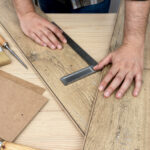 FlooringNovember 25, 2025What Engineered Hardwood Flooring Will Last Longest?
FlooringNovember 25, 2025What Engineered Hardwood Flooring Will Last Longest?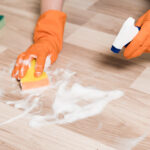 FlooringNovember 22, 2025Best Wood Floor Cleaner Liquid for Hardwood Flooring
FlooringNovember 22, 2025Best Wood Floor Cleaner Liquid for Hardwood Flooring FlooringNovember 21, 2025How To Remove Adhesive From Hardwood Floors?
FlooringNovember 21, 2025How To Remove Adhesive From Hardwood Floors? FlooringNovember 17, 2025Best Sanding Machine For Hardwood Flooring
FlooringNovember 17, 2025Best Sanding Machine For Hardwood Flooring

